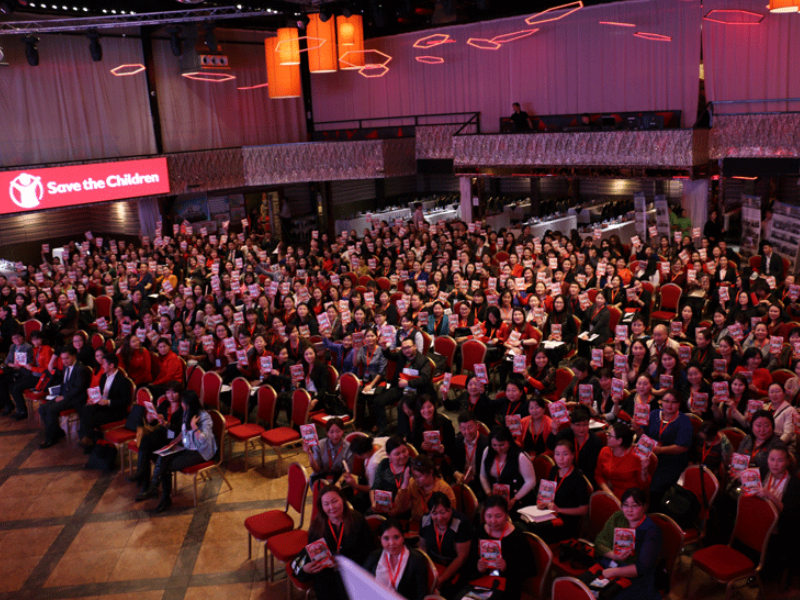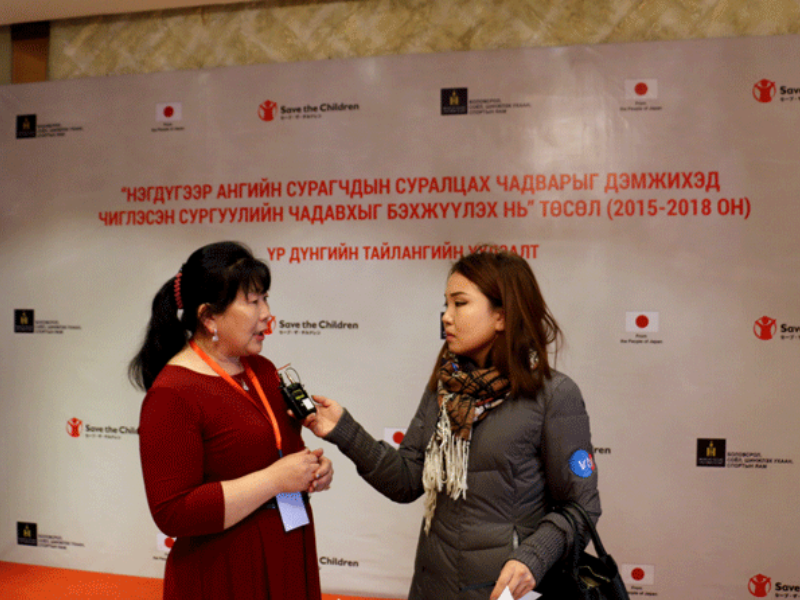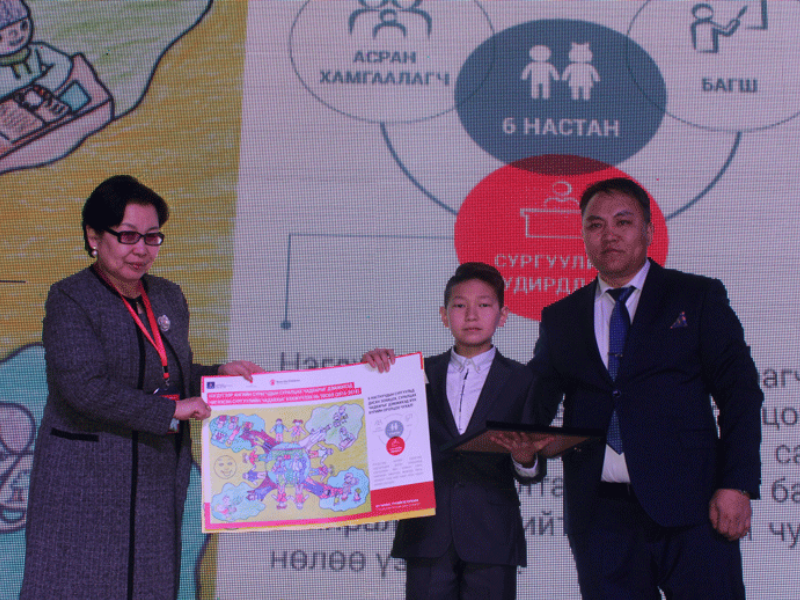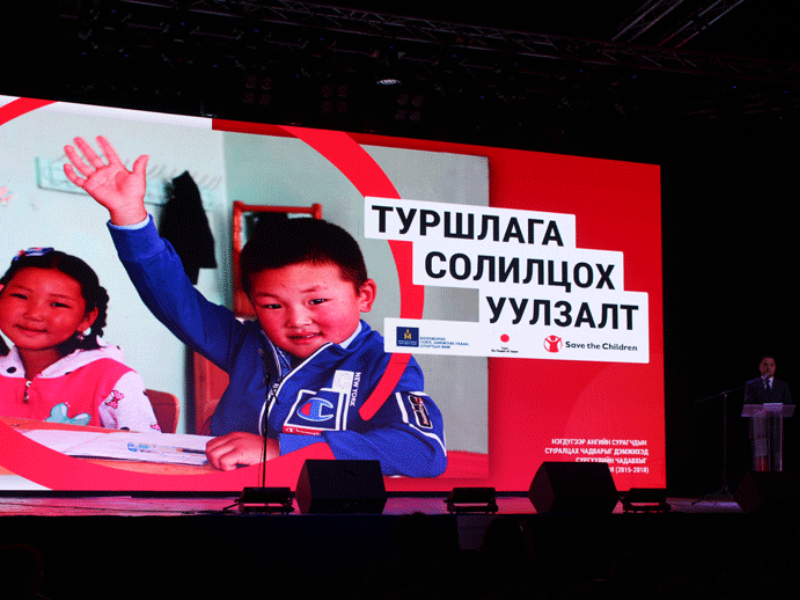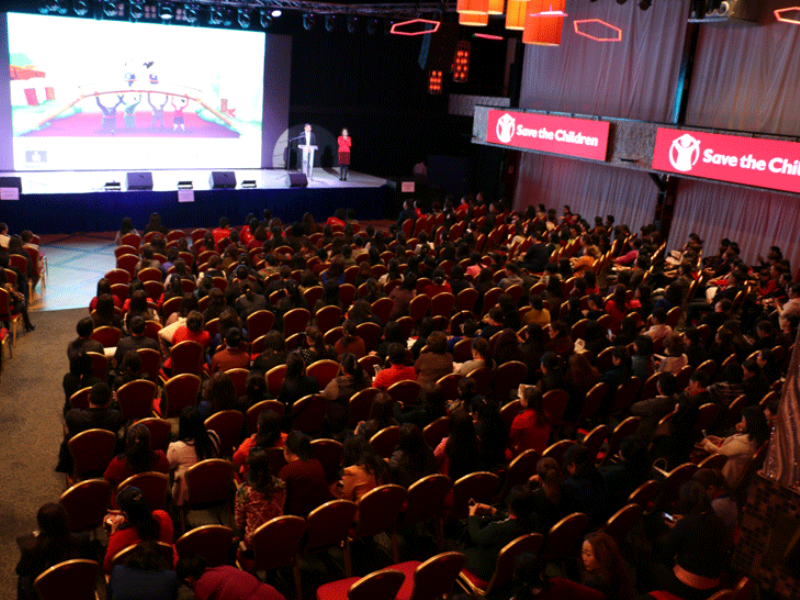Sharing the best practices of improving 1st grade students’ school transition skills
Save the Children and MECSS implemented the project “Strengthening Schools to Nurture Effective School Readiness and Learning Experiences in First Grade Children of Mongolia” between 2015 and 2018 with financial support from Ministry of Finance of Japan. Project targeted 24 public schools which are located in the ‘ger districts’ including Songinokhairkhan, Bayanzurkh and Chingeltei, where mostly vulnerable people reside, most of who are migrants the countryside. By the end of the project, it has reached 204,641 people directly.
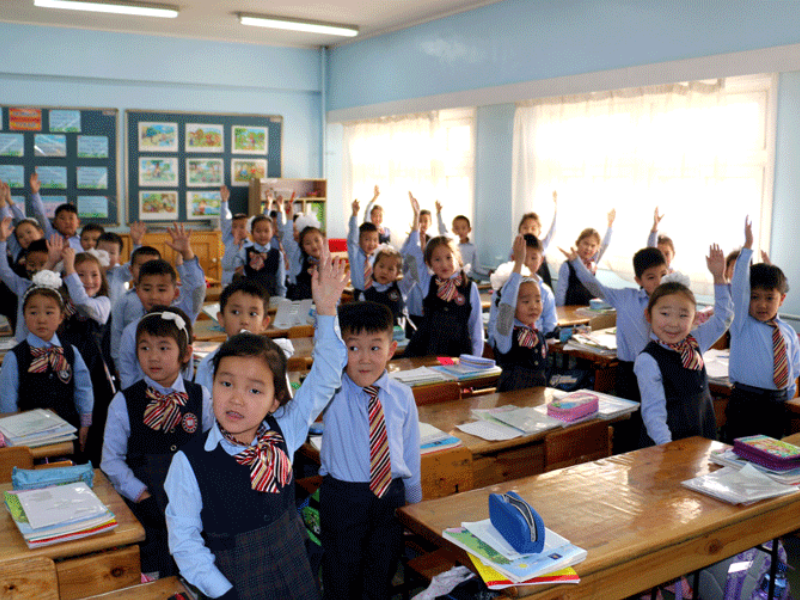
The project achievements:
- Conducted trainings for 1,523 primary school teachers
- Trained teachers have supported over 65,000 children through active teaching methodology
- Developing innovative policies, target schools are working towards to become model schools for the first-graders
- Organized a variety of activities to support students’ learning process with involvement of 46,000 parents
- In collaboration with MECSS, the “First Grade Preparatory Program” and its exercise book are updated and being implemented nationwide
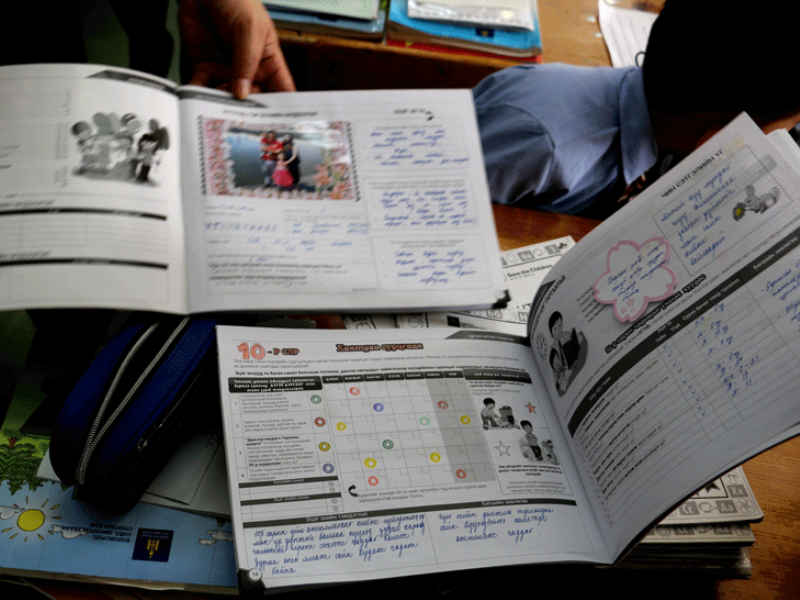 “First Grade Preparatory Program” and its exercise book
“First Grade Preparatory Program” and its exercise bookOn 6th of March, 2018, Save the Children introduced the best practices from target school community, teachers and parents on improving first grade students’ learning and school transition skills. For example, school No.37 and school No.117 started organizing the “School Visit Tour”. This is an important activity in bringing the school environment closer to 6-year old children. The school no.39 uses the reading card – a board game specifically designed to features of the 6 -year-old children’s learning. Parents prepare them by putting all letters and syllables on the back of playing cards and first graders develop their reading skills by read them one by one.
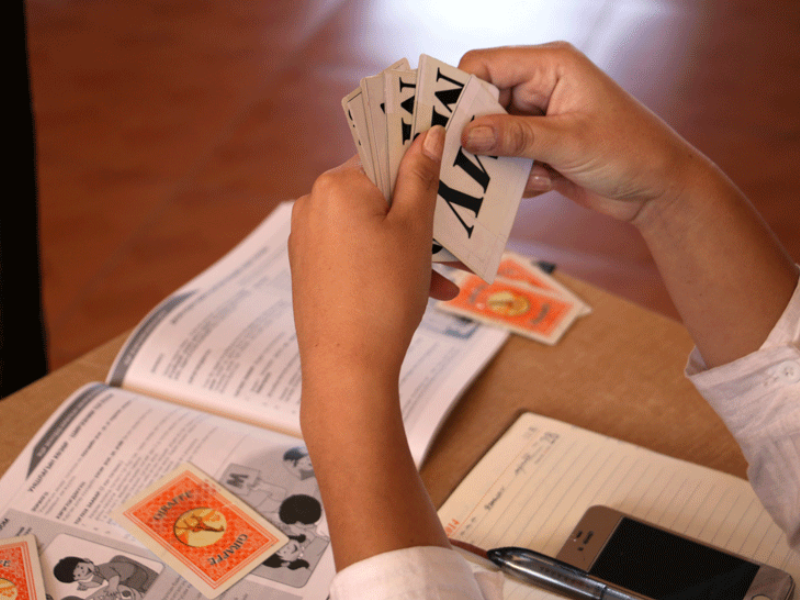
Reading card prepared by parents
School no.17, another project target school, run one-month campaign of making training materials and tools in order to help reduce the workload of first-grade teachers and to organize activities outside the classroom. Various instructional materials and tools, such as posters and small books that are made during the campaign are have been used by first grade teachers to hold 6-year-old students’ attention and to encourage teacher’s co-operation.
These and other best practices, training modules and initiatives of the project could be used as one of the educational models in improving learning skills of the 1st grade students especially those who did not attend the formal ECE.
